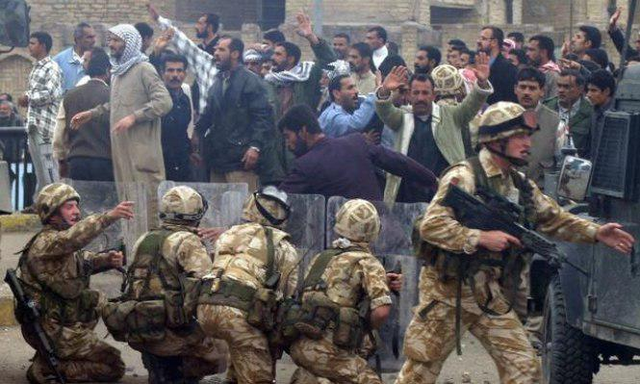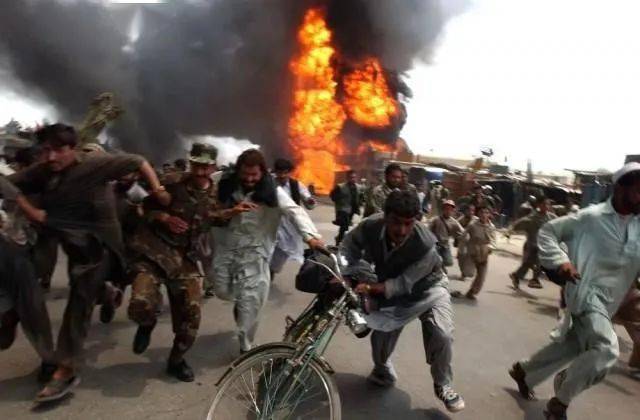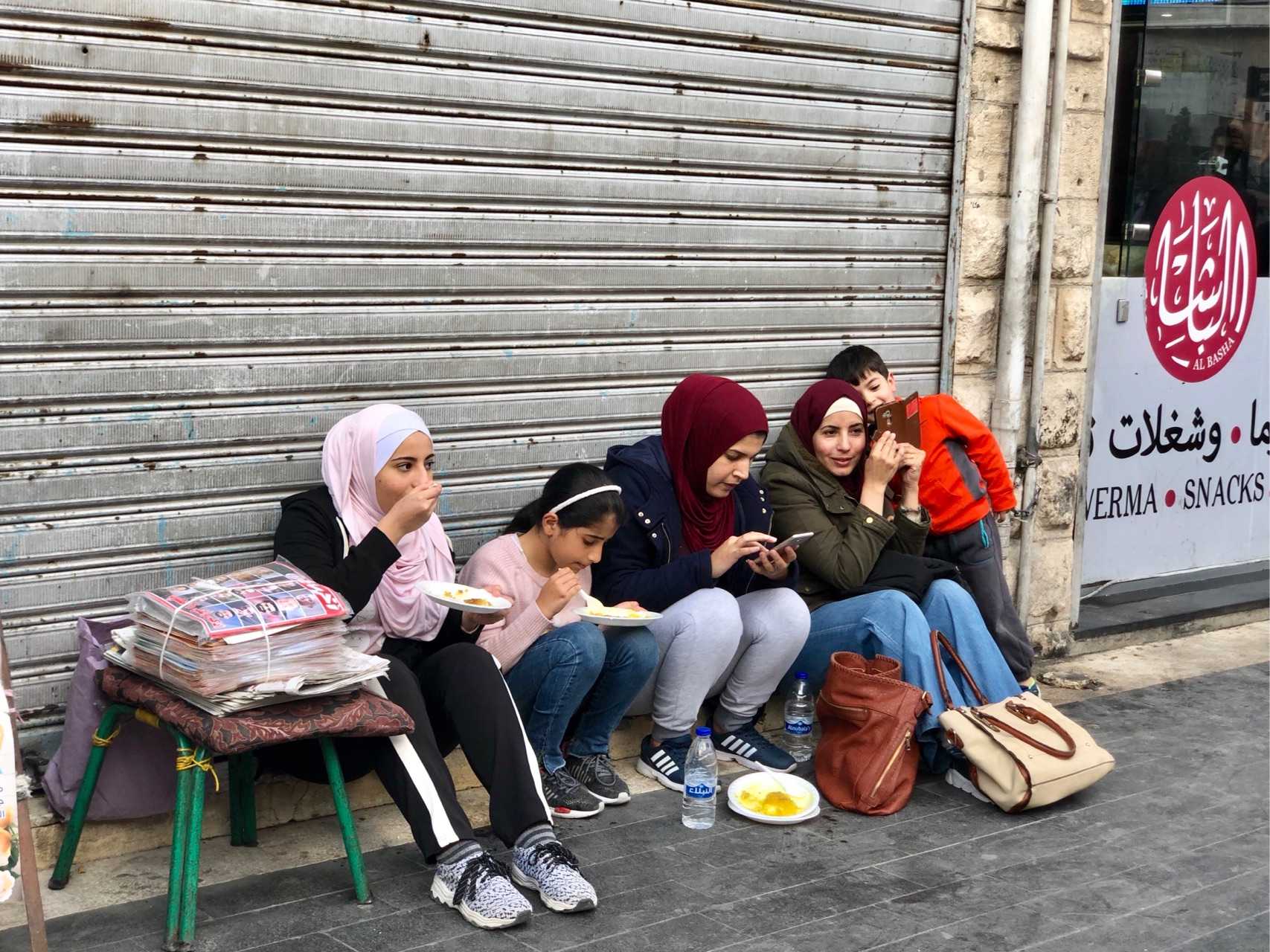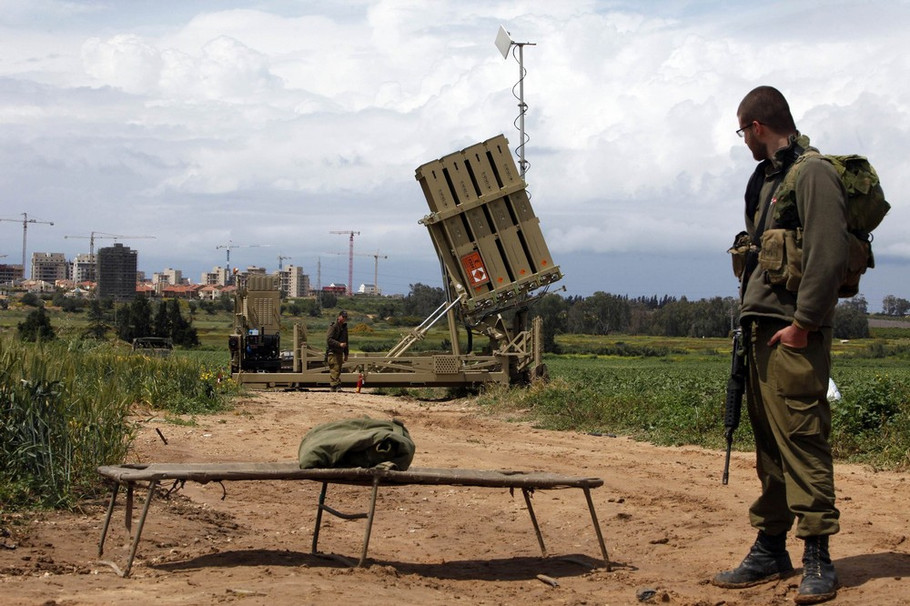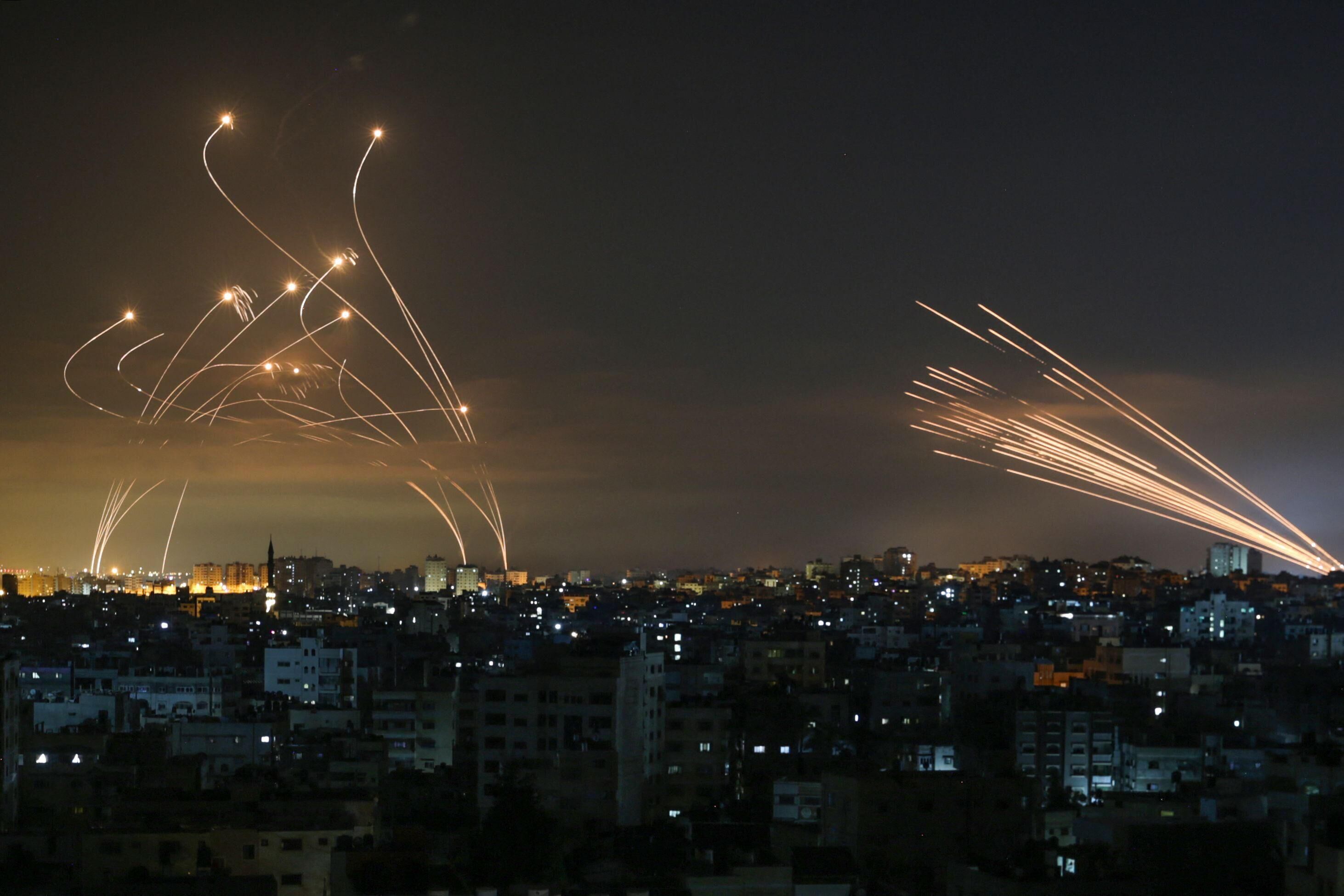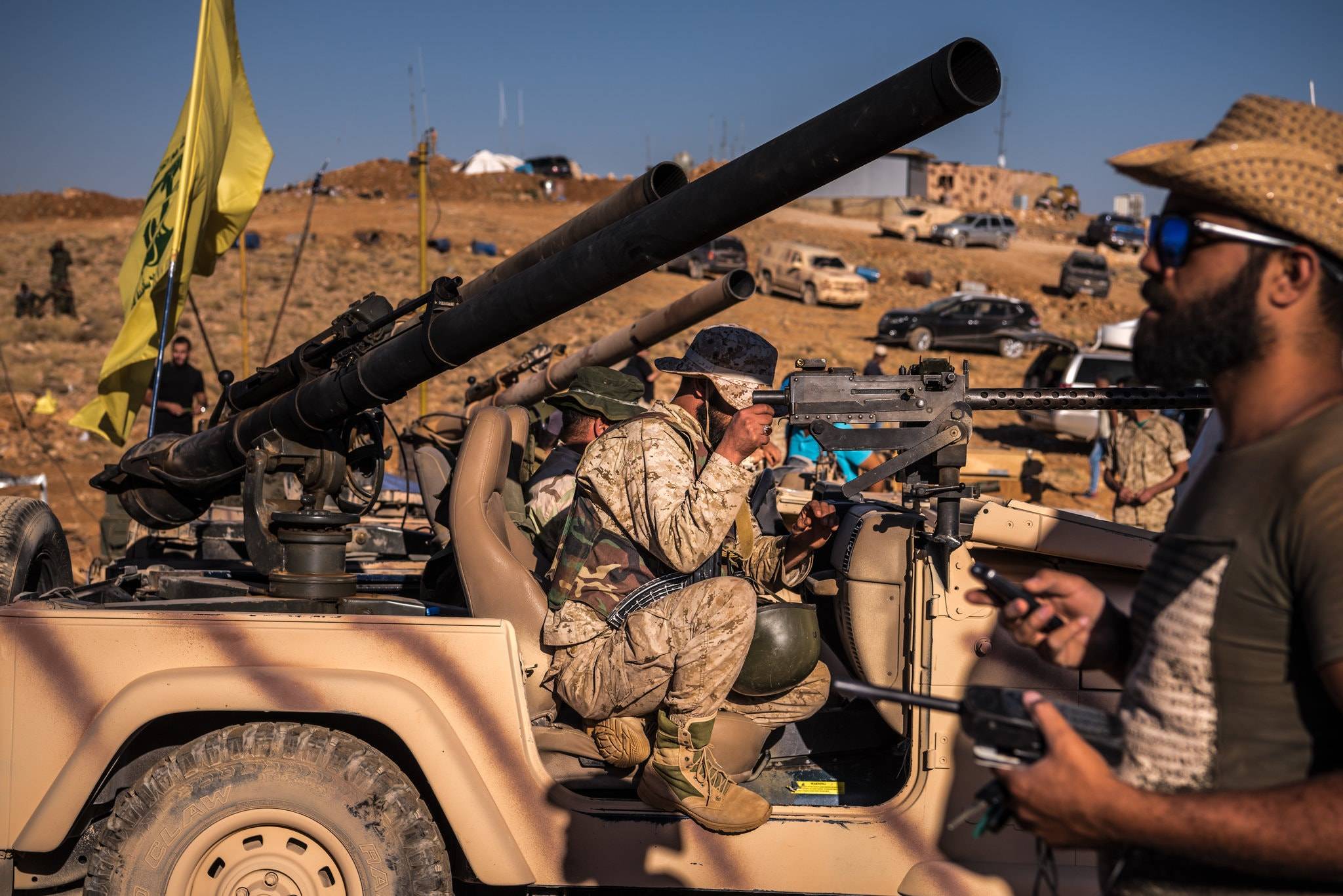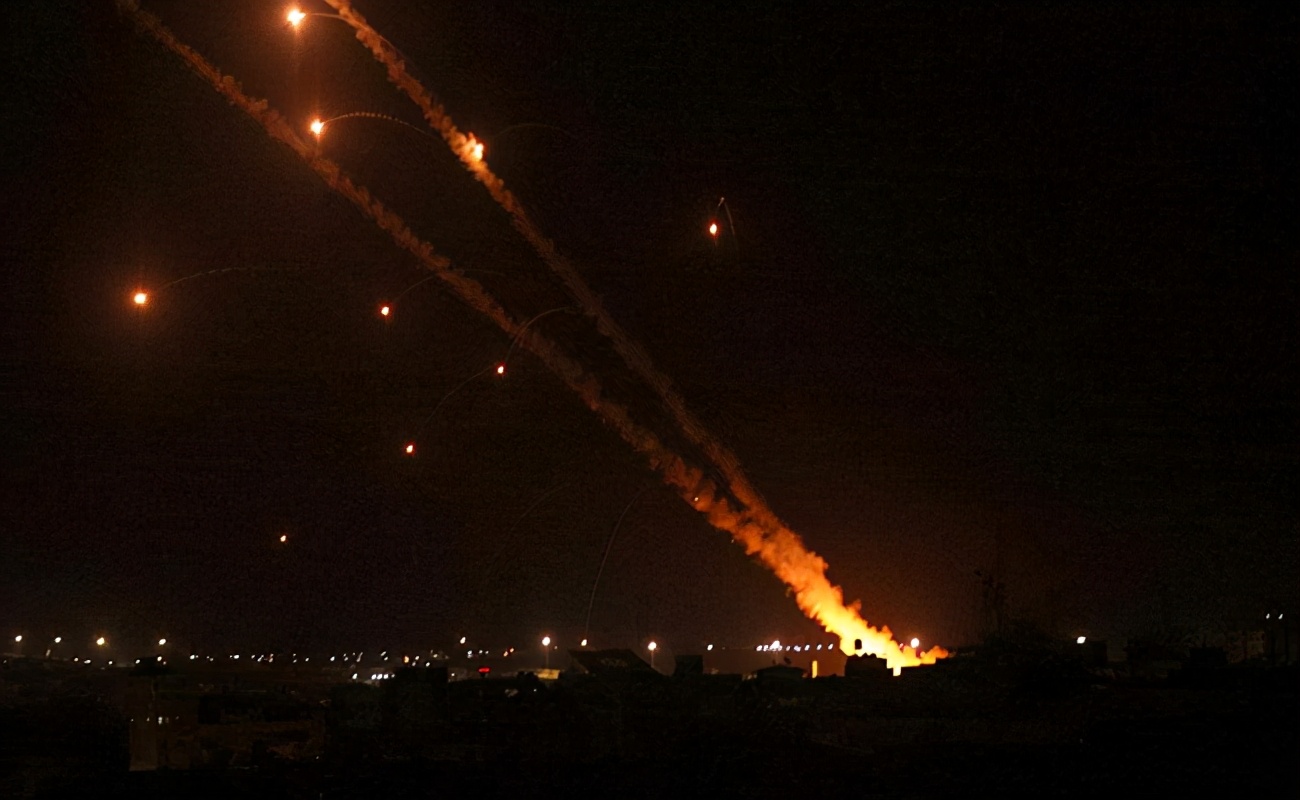John Xie
Author of strategy account
Harbin
Rampage in Harbin – Sharing of niche humanistic and historical routes
A runaway trip to Harbin – a small cultural and historical route experience
"As an art student, even though I have graduated N years ago, I still have a deep love for art, architecture, history and culture. If I count the cities I have been to – Beijing, Tianjin, Qingdao, Xiamen, etc., the photos I left behind all have a certain The profound imprints are the buildings left by the semi-colonial and semi-feudal modern history of China. Speaking of this period of history, I looked at the map app and found that Harbin next to it also had a pivotal historical position in that era, so I found a weekend and spent some time there quietly. I wrote down the rampage route and wanted to see those “old men” who had witnessed history.
Three major cultural routes in Harbin – religious churches, ruins left by the Eastern Railway, former foreign consulates in Harbin
Overview:
First of all, the establishment and reproduction of the city of Harbin are inseparable from a name, which is the Middle Eastern Railway, which is the abbreviation of "China Eastern Railway", also known as the "Eastern Qing Railway". After the Russo-Japanese War, it was called the Middle Eastern Railway, which was the name of the Tsarist Russia. The railway was built in order to dominate the Far East and plunder the resources of Northeast China. Construction of the railway officially started in 1898. With Harbin as the center, it was divided into three lines: east, west and south. Construction started at six points facing each other at the same time. Completed in 1903, the opening of the railway brought a large influx of capital, stimulating the rapid development of Eurasian commerce. More than 160,000 expatriates from 33 countries, as well as consulates from 19 countries, gathered and set up in the Eastern Province Railway Company Management Center, Railway Hub of Harbin. It was at that time that the prototype of Harbin as a modern city was formed.
line
Mafengwo's itinerary planning was used, and there were a total of 31 locations. After inputting, the itinerary was intelligently optimized. Some of the itineraries were not visited due to time constraints, but most of them were still visited. We also passed by many old buildings from those years. If you have a tight schedule, except for the far away Hulan Catholic Church, you can walk there in one day without actually going inside. I divided it into two days. Go, the time is basically in the afternoon and morning, many exhibition halls are not open when you go, it is a check-in trip. When I walked, I didn't strictly follow the route. I took pictures of old buildings along the way and went in to take a look.
The specific itinerary is as follows
Qiulin Company – Endeavor Food – Revolutionary Leaders Inspected the Heilongjiang Memorial Hall – The Former Site of the French Consulate in Harbin – The Former Site of the British Consulate in Harbin – Heilongjiang Provincial Museum – St. Nicholas Church – The Former Site of the Japanese Consulate in Harbin – The Former Portuguese Consulate in Harbin – The United States Embassy in Harbin The former site of the Consulate in Harbin – the former site of the Czech Consulate in Harbin – the Church of Our Lady of the Guardian – the German Lutheran Christian Church – the former site of the Consulate General of Japan in Harbin – St. Ivel Church – the International Sister Cities Exhibition Hall – St. Sophia Church – the former site of the German Consulate in Harbin – Tartar Tai Mosque – Old Synagogue Concert – New Jewish Synagogue – Former Site of the Italian Consulate in Harbin – Harbin Institute of Technology Museum – Former Site of the Soviet Consulate General in Harbin – Former Site of the Russian Consulate in Harbin – St. Alexeev Church – Mosque – Dormition Church
Former site of Qiulin Trading Company
This Qiulin Trading Company is the oldest and most famous shopping mall in Harbin. Qiulin Company was first founded by the Russian I. Yaqiulin in 1867 in Irkutsk, Russia. In 1900, with the construction of the Middle East Railway A branch was established in Harbin and named "Qiulin Yangxing". After the October Revolution, Qiulin Company moved its headquarters to Harbin Commercial Bank. It was successively run by Tsarist Russian capitalists, British HSBC Bank, Japanese businessmen, and the former Soviet government. In October 1953, it was transferred to my country with compensation. When I was a child, I used to think of Qiulin the most. The main ones are red sausage, big Lieba, and kvass. It is now a comprehensive shopping mall. Although most of the tourists coming here now go to Songlei and Yuanda, it does not prevent Qiulin, a time-honored store, from having its own customer base. The architectural style has strong Baroque characteristics and eclectic architecture.
Address: No. 320, Dongdazhi Street, Nangang District, Harbin City
As the center of Harbin, there is a constant flow of traffic and people in front of the shopping mall, just like this, you can watch the changes in the city over the past century.
Above the four characters of Qiulin Company is the word 1900, showing the long history of this building.
Fendou Road non-staple food mall
This shopping mall is opposite Qiulin Shopping Mall. Although it is not an old building, it has the most authentic and complete range of food in the Harbin local market. When I was in school, I remember that I would buy some snacks every time I passed by.
Similarly, you will often see long lines here to buy red sausages. In addition to eating them yourself, many of them are for souvenirs for relatives and friends.
Revolutionary leaders inspect Heilongjiang Memorial Hall
Built in 1909, it was originally a luxurious residence built by Polish timber merchant Gowalis. The building ranges from the private residence of the Polish timber merchant to the high-level club of the China Eastern Railway during the Japanese and puppet period, and the residence of the Soviet Red Army commander in Kazakhstan during the liberation of Northeast China. , the office of the head of the Northeast Democratic Alliance Army during the War of Liberation, and then a school for the children of Northeast Democratic Alliance Army cadres. After liberation, it became the guest house of the Harbin Municipal Government of Songjiang Province. After the founding of the People's Republic of China, party and state leaders Mao Zedong, Zhou Enlai, Liu Shaoqi, Zhu De, Zhang Wentian, and Song Qingling The older generation of proletarian revolutionaries all used to work and live here when they came to Heilongjiang for inspection. The revolutionary leader inspected the Heilongjiang Memorial Hall, which was built in 1975 and opened to the public free of charge in February 2008.
Use your ID card in exchange for tickets at the gate, and still use your ID card for verification after entering. Photography is not allowed inside the entire building. The architectural decoration inside can be seen to be very exquisite. The items on display are all photos of our country's national leaders who came to Heilongjiang Province for inspection. Well worth a visit. The architectural style is imitation of French classical mansion-style architecture.
Address: No. 1, Yiyuan Street, Nangang District, Harbin City
Looking at the attic window on the upper floor of the building, it feels a bit like Doctor Strange's New York club
It is conceivable that this exquisite building would have been very conspicuous without being surrounded by so many modern shopping malls.
There are windows on all four sides of the attic, so you can imagine that the lighting is very good.
The former site of the French Consulate General in Harbin
Address: No. 3, Yiyuan Street, Nangang District, Harbin
Built in 1914, it is a brick-concrete structure with a classical architectural style. It was originally the private residence of the Jewish businessman Leonki Shayevich Skidelsky. This building is also full of historical legends. First, let’s talk about its builder. Skidelski is a Jewish family. This family is closely related to Harbin. It was once extremely wealthy. The Portuguese embassy and synagogue that appeared later were all the properties of their family. Talking about this building, this The building was built by Skidelski's third son, Solomon. It was originally built for his father, Skidelski. Unfortunately, the old Skidelski never came here in his life. It was later leased to the French government for use in France. Consulate in Harbin. Later, in August 1918, it became the field transportation department when Japan sent troops to Soviet Russia. Later, it became the location of the headquarters of the Japanese secret service in Harbin. After liberation, No. 3 Yiyuan Street was used by the Heilongjiang Provincial Government. In 1950, when Mao Zedong and Zhou Enlai visited Su Guiguo for inspection in Harbin, Zhou Enlai lived in this building. It is now the Heilongjiang Provincial Veteran Cadre Activity Center, and visitors are not allowed inside.
This building is the best preserved of all existing foreign consulates.
The year of construction of the same building is clearly displayed on the upper floor, but I don't think the year was originally marked.
The former site of the Dutch Consulate in Harbin
Address: No. 124, Hongjun Street, Nangang District, Harbin
Built in 1921, it was first used as the head office and residence of "Cheschakov Tea House". Later, the Dutch Consulate in Harbin was established in 1915, located on Daoli Shuidao Street (Zhaolin Street). In 1921, it moved to Fuhua Street, Nangang District, and later to the "Cheschakov Tea House" located at No. 124, Red Army Street in front of the current station. Later, due to insufficient business, it was announced to be closed down on July 12, 1922. After liberation, it became the Harbin Railway Trading Company, and after the 1990s it became the current camera shop.
The former site of the Russian Consulate General in Harbin
Address: No. 85, Hongjun Street, Nangang District, Harbin
It was built in 1901 and completed in February 1903. Belonging to the "Art Nouveau" architectural style, this is the first building on Red Army Street. It was originally the Eastern Railway Administration Hotel. In 1937, when the Japanese army invaded China and Harbin was occupied, it became the "Damato Hotel" for receiving military and political dignitaries. After liberation, this was the expert building that received experts from the former Soviet Union. In 1968, it became Harbin Railway Hospital and later changed to Railway Guest House. In October 1997, it was designated as the VIP Building of Longmen Building. This building should be the best-preserved consulate. Over the past century, it has witnessed many important events in Harbin’s modern history. Room 215 has also housed the Puyi couple and General Zhang Xueliang. The hotel has also been the location for many film and television dramas, such as "Harbin at Night"
The former site of the British Consulate General in Harbin
Address: No. 69, Hongjun Street, Nangang District, Harbin
Built in 1919, it served as the British Consulate General in Harbin in the 1930s and 1940s. After liberation, the building at No. 69 Hongjun Street was the office of the Heilongjiang Provincial Department of Education. Later, he worked in a trading company and even a restaurant. The southwest corner of the first floor caught fire in 2004 and was left idle afterwards. It is now used as a wedding photography studio. As the first established capitalist country to open the door to China, the United Kingdom also has a considerable influence on Harbin. We are familiar with it. The process of stuffing red sausage was brought by the British. In 1913, British businessman Ma Qian and others invested heavily in the establishment of Binjiang Products British Import and Export Co., Ltd., also known as the Chicken and Duck Company. The processing plant is located in District 8 of Daowai (Fujiadian). No. 1 British Street, mainly engaged in livestock and poultry slaughtering and meat processing, is one of the first three well-known enterprises in Harbin. It is also the earliest enterprise in Harbin to produce meat-filled products such as red sausage, and its canned products are exported to all over the world. This is the predecessor of the now nationally famous Kazakhstan Meat Federation.
According to rumors, the structure here is intricate, and there seems to be an underground passage leading directly to the train station.
Like most old buildings in Harbin, the appearance is maintained and the interior is hollowed out. It no longer looks like an old building, but only has a charm.
The small sculptures outside still feel a bit like those days.
The former site of the Italian Consulate in Harbin
Address: No. 63, Hongjun Street, Nangang District, Harbin
The building was built in 1919 with a brick-concrete structure in an eclectic style dominated by Baroque. It was originally named "Gibelo Soco Building". This name comes from the owner who built it: Italian Peter Ivanovich ·Gibello Soko. In 1920, Italy established a consulate in Harbin, and Gibelo Soco was appointed as the first consul. During the Japanese puppet period, it served as the Japanese military police headquarters. After liberation, it was managed by an electric power company and used by the electric power company as a warehouse, kindergarten and canteen. After the Electric Power Building was completed in 1987, the building has been hidden inside and lived in darkness. The Electric Power Building, which was 24 years old in 2011, was finally demolished after ten years of discussion about its demolition. The consulate finally "sees the light of day". Now you can see the restored building scene at the Harbin Tourist Service Center, and the exquisite fence at that time is still there.
Meyerovich Building
Address: No. 374, Dongdazhi Street, Nangang District, Harbin City
The Meyerovich Building is also called the Meyerovich Palace. This cream-yellow European-style building standing on the southeast side of Hongbo Square was historically called the Lotus Art School. The building was built in 1921, and the designer was Yu P. Zhdanov. With classical columns as the architectural theme, it is a typical French Renaissance style building. Initially, the first floor of "Meierovich Palace" was the Popivozhensky Hospital founded in March 1921. In the 1920s, it was here It became a gathering place for Russian intellectuals who fled to Harbin after the October Revolution. The Russian painter Kichkin came to Harbin and opened the famous "Lotus Art Studio" on the third floor. Later it became the Qiulin Company Staff Club. After liberation, it became the Harbin Children's Palace. At that time, it was especially famous for cultivating many young table tennis players. From here came generations of national table tennis players such as Han Yuzhen and Kong Linghui.
Heilongjiang Provincial Museum
Address: No. 64, Hongjun Street, Nangang District, Harbin City
Business hours: Tuesday to Sunday every week, closed all day on Monday, except holidays.
Summer: From April 1 to October 7, from 9:00 am to 17:00 pm, invoices will be stopped at 16:00 pm.
Winter: From October 8th to March 31st, from 9:00 am to 16:00 pm, invoices will be stopped at 15:00 pm.
Tickets: Visitors can collect tickets for free at the invoice counter at the entrance of the museum with valid ID.
Founded in 1906, the main building is a European Baroque building, the site of the original Russian shopping mall. With the establishment of the Middle East Railway, Russian scholars first initiated the establishment of a museum and converted the original Moscow shopping mall (now the main building of the Provincial Museum) into the exhibition hall of the research association. , on June 12, 1923, the Eastern Province Cultural Relics Research Association Exhibition Center was established here and opened to the public. During the Puppet Manchukuo Period, it served as the Institute of Cultural Relics of the Puppet Northern Manchuria Special Zone. After liberation, it was changed to the Harbin Heilongjiang Provincial Museum Institute of Science and Technology. In 1951, China took over and was renamed Songjiang Provincial Science Museum; in 1953, it was renamed Songjiang Provincial Museum; in 1954, it was renamed Songjiang Provincial Science Museum. After Songjiang Province was merged into Heilongjiang Province, the Songjiang Provincial Museum and the Heilongjiang Provincial Museum Preparatory Office merged and were originally called the Heilongjiang Provincial Museum.
Vostroumov Mansion
Address: No. 38, Hongjun Street, Nangang District, Harbin
It is an outstanding architectural work of the Art Nouveau trend in the early 20th century. It has a construction area of 776 square meters and a height of 12 meters. It was originally the office of the Eastern Railway Administration. From 1921 to 1924, it was the director of the Eastern Railway Administration, Vostro Umo. The husband's official residence belongs to the Art Nouveau architectural style.
The former site of the Consulate General of Japan in Harbin
Address: No. 351, Huayuan Street, Nangang District, Harbin City
The old consulate building was demolished in 2001 and is now the newly built Huayuan Primary School building. It was once the dormitory of the "731" members, "Baihualiao", which was famous for imprisoning the famous Korean martyr An Jung-geun. Now we can only look at the old address and the new school building.
The former official residence of the Consulate General of Japan in Harbin
Address: No. 298 Guogeli Street, Nangang District, Harbin City
Built in 1920, the brick-concrete structure is based on classicism and incorporates Renaissance and "Baroque" eclectic architectural styles. Before 1945, it was the official residence of the Japanese Consulate. In 1945, the Soviet Red Army sent troops to Northeast China. This building was occupied by the Soviet army and became the office of the Political Department of the Soviet Red Army Garrison Area Headquarters. In March 1947, it became the Harbin Soviet Higher Music School. After liberation, it became Suqiao Middle School. In 1958, it became the Foreign Affairs Office of Heilongjiang Province and continues to this day.
The former site of the German Consulate General in Harbin
Address: No. 22, Ashhe Street, Nangang District, Harbin City. It was built in the 1930s. It is a brick and wood structure with Renaissance architectural style. The doors, windows and some building components have been replaced. It is now the library of Garden Primary School and cannot be visited.
Former Portuguese Consulate Site
Address: No. 39, Ashhe Street, Nangang District, Harbin
Built in 1912, it is a brick and wood structure, imitating the architectural style of the Renaissance. This is the private residence of the two brothers Solomon and Simon, the third eldest son of the Skidelsky family. It was built earlier than the previous No. 3 Yiyuan Street. It was earlier. Later, Solomon founded the Muling Coal Mine Corporation and worked here. However, the brothers usually lived in the Madier Hotel and rarely lived here.
The former site of the U.S. Consulate General in Harbin
Address: No. 289, 291-1, 291, 293, 293-1, Dongdazhi Street, Nangang District, Harbin
Built in the 1920s (the specific time and historical data are unknown), it is a brick and wood structure with an eclectic architectural style. After the outbreak of the Pacific War, it was closed by the Japanese and puppet authorities. The last consul, Louis Guerre, and all the embassy staff were under house arrest in the embassy for half a year. At that time, the oil market in Harbin was monopolized by the United States.
Former Soviet and Czechoslovak Consulates in Harbin
Address: No. 52, Jilin Street, Nangang District, Harbin
Built in 1905, it has a brick and wood structure and a classical architectural style. It was originally the private residence of the famous Jewish businessman Kroll in Harbin. It served as the Consulate General of the Soviet Union in Harbin from 1924 to 1927. On June 13, 1931, the Czech Consulate in Harbin moved here from Dongdazhi Street. It opened on September 12 and later moved to Nangang Jianshe Street. After 1937, it became the liaison station for the "731" unit of the Japanese invaders, and was called the "731" Jilin Street Branch. There is a relief sculpture of a big eagle spreading its wings on each of the windows on the left and right, which is called the Big Eagle Tower by the people nearby. You can see that I took the photo when the lanterns were first lit. This time period really shows the dilapidation of this building now. It is really not the reason why I took the photo. Time is really cruel to these old buildings.
hagia sophia
St. Sophia Church is a Byzantine-style Orthodox church built in 1907. It is redundant to introduce it. It is already the business card of Harbin city. Like most churches left by Tsarist Russia, this church is also a military church. After passing After several renovations, it became the current scale. During this period, it was also used as a shopping mall warehouse in the New 100. It is now open to the public as the "Harbin Architectural Art Museum".
Central Avenue
It is another iconic location in Harbin, starting from the Flood Control Memorial Tower Square on the riverside in the north and connecting to Xinyang Square in the south, with a length of 1,400 meters. This long street was built in 1900. The street buildings include 71 buildings in various styles such as Renaissance and Baroque. The rise of Central Street can be traced back to when Tsarist Russia came here to build the Middle East Railway. The urban construction that followed was first called "China Street". The Middle East Railway Engineering Bureau gave the wasteland along the river to the Chinese scattered in Harbin, and it was formed in 1900. "China Street" means the street where Chinese people live. In addition to various old buildings, there are now several well-known Russian-style Western restaurants with a long history on the street, such as: Huamei Western Restaurant, Madier Western Restaurant, Tadous Western Restaurant, etc.
The former site of the German Consulate in Harbin
Address: No. 10, 12, and 18, West Erdao Street, Daoli District, Harbin
Built in the 1920s, the Renaissance architectural style is different from the other gray building style. The color of this building is brighter. The doors, windows and some building components have been replaced, and the walls have been renovated. However, the current color It's not as new as when it was first renovated.
Former site of Municipal Administration Bureau of Eastern Province Special Region
Built in 1921, it imitates the style of classical architecture. On February 5, 1921, the Eastern Province Special Region Municipal Administration was established and announced that it would take over the municipal power of Harbin and the Middle East Railway. Only then did the municipal power of Harbin truly return to the hands of the Chinese. This small building built in 1921 on Shangshi Street in Butou District (now Hongxia Street in Daoli District) was the location of the Municipal Administration Bureau of the Eastern Provincial Special Region. After 1926, it became the Public Works Office of Harbin Special City. Now as the Harbin Center for Disease Control and Prevention, it is very close to Central Street. You may pass by here inadvertently and look up at this old building.
Tatar Mosque
Address: No. 08, Tongjiang Street, Daoli District, Harbin City (formerly No. 58 Paodu Street)
It was built in 1901 as an Arab mosque influenced by Byzantine style. Tatars refer to Russian Yitrers with black curly hair and Turks living in East Asia. The Tatars were one of the first Russian ethnic minorities to arrive in Harbin with the construction of the Middle East Railway.
In 1953, the Tatar Mosque was leased to the Harbin Branch of the China Hardware and Machinery Company. It was borrowed by the People's Armed Forces Department of Daoli District in 1966. During the Cultural Revolution, it served as a military ammunition warehouse and a civilian warehouse. In 2001, the city government returned it to the Municipal Islamic Association.
Jewish high school
The foundation stone was laid on October 1, 1917, and the school was completed and opened in December 1918. At the end of the 19th century and the beginning of the 20th century, a wave of anti-Semitism and anti-Semitism broke out in Tsarist Russia, and a large number of Russian Jews immigrated abroad. Harbin once became the largest Jewish settlement center in the Far East. The other center was Shanghai. The predecessor of this Jewish middle school was a five-year Jewish primary school, teaching in Russian and learning Hebrew. After liberation, it became the site of Harbin No. 41 Middle School and Harbin Korean No. 2 Middle School. Now the signboard of Glazunov School of Music and Art has been hung up again, and various talent training courses are held.
Harbin Old Hall Concert Hall
Address: No. 82, Tongjiang Street, Daoli District, Harbin City
The foundation stone was laid on May 3, 1907, and it was completed and opened on January 15, 1909. It was historically known as the "Harbin Synagogue" and "Harbin Old Jewish Synagogue". The Harbin Synagogue was opened from 1909 to 1963 when it was closed. After 1963, The building was taken over by Harbin Vehicle Factory. It has been used by Harbin Vehicle Factory Hospital, Harbin Vehicle Factory Guest House, Railway Youth Travel Agency and other units. Now the old synagogue has restored its former glory of Western chamber music, and holds various concerts from time to time.
new synagogue
Address: No. 162, Jingwei Street, Daoli District, Harbin
Tickets: 25 yuan for adults; 12 yuan for seniors (60-64 years old), students, and active military personnel; free for seniors (over 65 years old) and children (under 1.2 meters)
The Hasidic Synagogue was built in 1918 with an Arabic architectural style. It is called the new synagogue because it is compared to the old synagogue of the Tongjiang Street Jewish Center. After the liberation of Harbin, Jewish expatriates began to leave the country one after another around 1950. The New Jewish Synagogue closed in 1956, and its original location was once the Municipal Public Security Bureau Club Guesthouse. It was renovated in 2004 and is now the "Harbin Jewish History and Culture Museum".
Danish Consulate Former Site
Address: No. 89 Tiandi Street, Daoli District, Harbin. It was built in 1920. It is an elegant and unique eclectic style European-style building. In November 2007, it was planned to transform the building into the Harbin International Sister City Exhibition Hall. It was officially opened in January 2009. , free and open to the public.
St. Yver's Church
Address: Factory Hutong, Jihong Street, Daoli District, Harbin (the factory Hutong was removed after the completion of the North Square of Harbin Railway Station and is located on Digong Street)
Construction started on May 27, the 33rd year of Guangxu (1907), and was completed in 1908. It is an eclectic building with a brick and wood structure. 20 meters northwest of Iver Church, there is an orphanage affiliated with the church built in 1924. Iver Church is also the only historical religious building in Harbin that has auxiliary buildings preserved. In the same year, the Sophia Church was built. Because both were military churches, the Iver Church and the Sophia Church were called "sister" churches. With the reconstruction of the north square of the train station, the church was restored and improved, and the orphanage was also restored. However, the restored church lost its original flavor and looked much newer.
You can see the church from the north exit of the train station
When searching for information on the Internet, I can see photos of the church when the North Square was renovated and demolished. The color of the wall is similar to that of Saint Sophia, but the building is extremely dilapidated, and due to the damage caused by the Cultural Revolution, the church roof above is missing. Got it
You can compare the information photos you found online (if there is any infringement, tell me and I will delete it)
The outside of the orphanage was also renovated, and the entire wall was painted as if it had just been built.
Our Lady of the Guardian Church
Address: No. 268, Dongdazhi Street, Nangang District, Harbin City
Harbin Our Lady's Church, also known as the Harbin Our Lady's Guardian Church and the Ukrainian Church. Its Russian transliteration is Baklovskaya Church. The Orthodox church was originally a Russian cemetery. A stone structure prayer house was originally built in the cemetery. It was about 100 meters tall. 2 meters, with a statue of the Virgin and a candlestick inside. Construction of the wooden church began in 1922. It is a typical Byzantine Orthodox church.
Former Orthodox cemetery prayer pavilion. It was built in 1920 to pray for the souls of fallen soldiers and was discontinued in 1930.
After the service, people gathered around the door to chat. They wanted to go in for a visit, but were politely refused.
Opposite the church is the Cathedral of the Sacred Heart of Jesus, which was originally St. Stanislav's Church in Nangang (Polish Catholic Church). It is a Catholic church built by Polish expatriates. It was rebuilt in 2004 as a new building.
Christian Nangang Chapel
Address: No. 252, Dongdazhi Street, Nangang District, Harbin
Founded in 1914, the design style is a German Gothic church. Due to historical reasons, the church was forced to close in 1967. Since the Third Plenary Session of the Party Central Committee in 1978, the church was returned and restored in 1980. Now it is open every weekend There were believers worshiping, and I went in to take a look. The people were very enthusiastic.
Former China Eastern Railway Association Office Building
Address: No. 78, Company Street, Harbin
Built in 1908, it was originally the headquarters of the China Eastern Railway Association, and is said to be the residence of senior officials of the China Eastern Railway. At present, there are only three such buildings in Harbin, and the two are located at No. 38 Hongjun Street (as written before, now KFC) and No. 236 Zhongshan Road, Nangang District, inside the First Flying Academy of the Air Force. The architectural history is almost as big as the city of Harbin. From May 1946 to April 1949, he successively served as the deputy commander of the Northeast Democratic Allied Forces General Headquarters, the commander of the Western Manchuria Military Region, the commander of the Songhua River Defense Command Command, and the Northeast Railway General Administration General Lu Zhengcao, the director, political commissar and deputy minister of the Ministry of Railways of the Military Commission, once lived. The first floor is now a cafe.
Former Russian Consulate General in Harbin
The building was completed in 1906, with two floors above ground and one underground floor. In 1909, the Russian Consulate General moved in. In 1920, Harbin Sino-Russian Industrial School was established. This building, which was once the Russian Consulate General in Harbin, became the site of the Sino-Russian Industrial School. Entering the new century, Harbin Institute of Technology decided to use this century-old building on Company Street as the site of the Harbin Institute of Technology Museum. On the eve of the 90th anniversary of Harbin Institute of Technology in 2010, the Harbin Institute of Technology Museum was opened at No. 59 Company Street.
The former site of the Consulate General of Russia and the Soviet Union in Harbin
A very legendary building, No. 22 Yao King Street originally had four office buildings in the courtyard. Building 3 has been demolished due to serious damage. The earliest building was built in 1902 by the construction unit of the Eastern Railway to welcome Horvat. Horvath was the chief representative of the Russian Czar in Northeast China and the director of the China Eastern Railway Bureau at the time. In 1911, the Russian Consul General in Harbin moved into this courtyard from Company Street. After the October Revolution, many exiled personnel from the Belarusian regime gathered, including Semenov, the leader of the Tsarist Guards. It has also become the official residence of General Pleskov, the commander-in-chief of the Russian army attached to the China Eastern Railway, and the base of the exiled Belarusian regime established by Admiral Kolchak, commander of the Russian Black Sea Fleet.
In 1927, the Soviet Consulate General in Harbin moved here from the former Jewish businessman Kroll's residence at No. 52 Jilin Street (later the Czechoslovak Consulate in Harbin). From then until 1962, it became the Consulate General of the Soviet Union in Harbin.
After liberation, there were many legendary experiences here, and now it is said that it has been taken back to be used as the Russian consulate in Harbin. This is also a beginning and an end.
St. Alexeev's Church
Address: No. 47, Shike Street, Nangang District, Harbin
Built in 1931, it is a typical Russian-style building. It was originally an Orthodox church. It was restored and converted into a Catholic church in 1980. St. Alexeev's Church was originally the Princess Ridge Army Church. After the deployment, it was moved to the Russian Army. Here, on February 25, 1912, a wooden church was built at the current site (it was demolished on July 13, 2000 during the renovation of the surrounding environment). In October 1930, construction began next to the wooden church. This existing brick and stone church was completed on October 6, 1935. After the "Cultural Revolution", the relevant departments carried out comprehensive repairs on the church and assigned it to the Harbin Catholic Church. During the Christmas season of 1980, the church was officially opened to the public.
mosque
Address: No. 108, Tongjiang Street, Daoli District, Harbin City
Built in the 23rd year of Guangxu (1897), it was originally called Harbin East Mosque and formerly known as Binjiang Mosque. It was originally divided into the East Temple, the West Temple and the Women's Temple. In 1958, the East Temple merged with the West Temple and the Women's Temple, and the East Temple was opened and called the Harbin Mosque. The Harbin Mosque has a total area of 0.016 square kilometers and is the largest Islamic mosque in the Northeast. The main hall is 13 meters high and can accommodate 500 to 600 people. The back kiln hall has a 21.75-meter-high minaret (commonly known as the Moon Tower). Behind the mosque, there are many butcher shops selling beef and mutton, as well as halal restaurants. I think they should be delicious. , you can try it if you like it.
Dormition Church
Address: Harbin Cultural Park, No. 208 Nantong Street, Daowai District, Harbin, also known as the Assumption Church, also known as Uspinkaya Church. It was originally built with funds from the China Eastern Railway Administration and donations from believers. In the late 1980s, the Harbin Municipal Government invested in it Make repairs. This place was changed to "Harbin Amusement Park".

